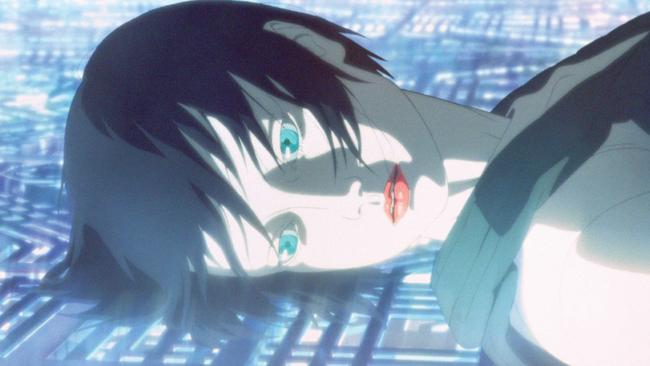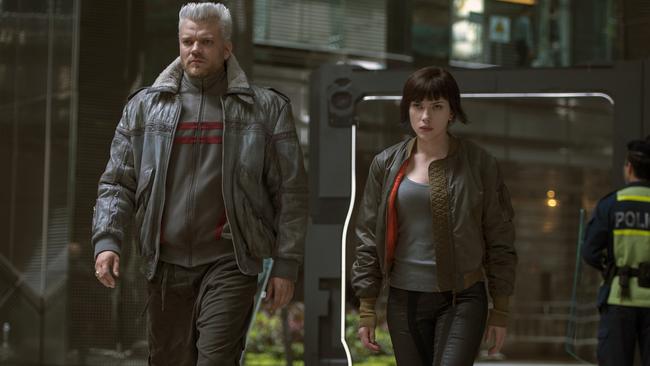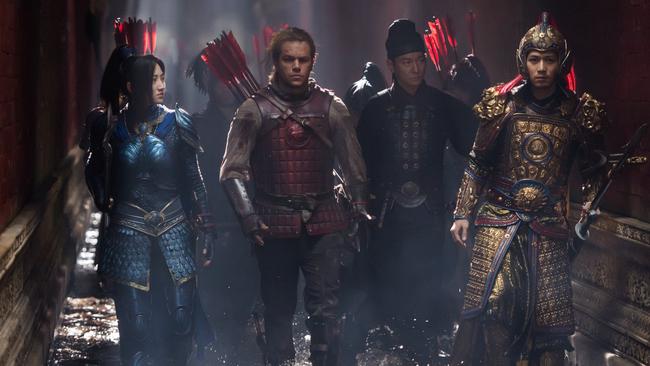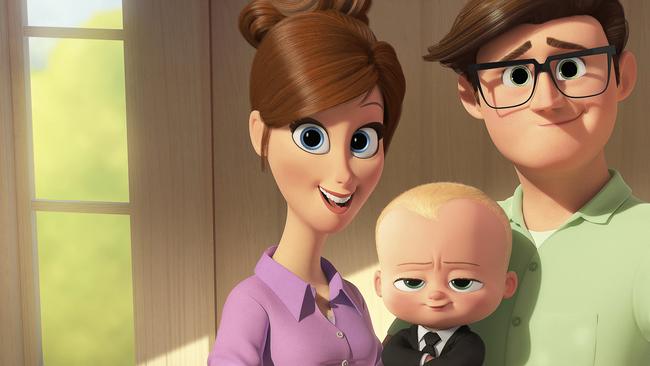Breaking down the controversies around ‘Ghost in the Shell’
IF YOU haven’t been keeping up with the controversy surrounding Ghost in the Shell, here’s your cheat sheet to the drama surrounding this sci-fi thriller.
WE’VE been hearing about the live action version of Ghost in the Shell for a long time, but now it’s finally arrived.
DreamWorks originally acquired the rights to a live action remake of the original anime movie in 2008, and since then, Hollywood has been haunted by rumours of this movie. However, bringing Ghost in the Shell to theatres has been far from a smooth ride.
Why has there been so much controversy? Will all of these think pieces and online protests affect the movie’s opening weekend? And what even is Ghost in the Shell? In case you haven’t been keeping up with this particular controversy, we have you covered. Here’s your cheat sheet to the drama surrounding this sci-fi thriller.

WHAT IS GHOST IN THE SHELL?
Ghost in the Shell is one of those rare anime franchises that’s been able to bubble up and influence mainstream pop culture. The manga was first released in 1989 and was written and illustrated by Masamune Shirow.
The sci-fi odyssey tells the story of Major Motoko Kusanagi, the leader of a cyberterrorist organisation called Public Security Section 9. Set in 21st century Japan, Major lives in a universe where it’s possible to import your consciousness — or “ghost” — into different robotic bodies.
Though Major has been an agent of Public Security for many years, she prefers placing her “ghost” into younger, female bodies. The first movie follows Major’s investigation into a hacker known as the Puppet Master.
Over the years, Ghost in the Shell has been revived several times. Prior to the 2017 live-action American movie, the franchise had four films, four video games, three books, and three television shows. It’s a franchise that keeps coming up in pop culture, and for good reason.
Ghost in the Shell, with its beautifully futuristic settings and deep pondering on the role identity plays in a technology obsessed world, has influenced sci-fi and fantasy since the first movie was released in 1995. It makes sense that a project that captures many of the same themes that are in today’s best dramas would remain relevant. Add in the fact that Hollywood loves to adapt anime and comic book stories, and you have a franchise that was inevitably going to get a live-action reboot.

SO WHAT’S THE CONTROVERSY?
It all comes down to whitewashing. Ghost in the Shell is a Japanese franchise and Major is often interpreted as a Japanese woman. Scarlett Johansson, on the other hand, is not. When Johansson’s casting was first announced way back in 2015, fans launched a petition against the Americanised casting and film. Since then, every released image, teaser trailer, and announcement surrounding the movie have been tinged by fan outrage.
The controversy took on more weight when Screencrush revealed that Paramount and DreamWorks ran a visual effects test to make characters in the film appear more Asian.
Following the outrage this report prompted, Paramount responded, claiming that the tests were never used on Johansson’s character but instead a single background character in one scene.
Whether or not this was true, the resulting report and statement led to a greater amount of outrage, including criticism from celebrities like Constance Wu.
It's like way to reduce race to mere phys appearance as opposed to say culture, social experience, identity, history https://t.co/JDbu9s0DPt
— Constance Wu (@ConstanceWu) April 15, 2016
DOES WHITEWASHING HAPPEN A LOT?
Yes, which is a big reason why Ghost in the Shell has been such a problem. Judging by its $US220 million budget and its choice to go with a big name like Johansson, Paramount and DreamWorks are likely planning on turning Ghost in the Shell into a franchise.
If the movie proves to be the big, successful first instalment its studios are banking on, it’s going to make Johansson a lot of money, and our action movies are already packed with super-famous white actors saving America.
Whitewashing has been an especially big problem in 2017. 2016 ended with the psychedelic Doctor Strange, which featured Tilda Swinton playing the Ancient One, a character who is portrayed as being of Tibetan descent.
This year has also seen Matt Damon playing a white saviour in The Great Wall and Finn Jones becoming a perfectly privileged martial arts master in Iron Fist. Also, Netflix has already set the date for another Americanised property from Japan — the live action version of Death Note.
Likely because the show is less widely known, is going to be released on a streaming service, and doesn’t have any huge stars attached other than Willem Dafoe, the movie hasn’t faced many whitewashing accusations yet. Basically, Hollywood has already been flooded with stories about white people saving the world. Forcing a beloved Japanese franchise to fit this narrative seems cruel.

HAS JOHANSSON RESPONDED TO THE WHITEWASHING ALLEGATIONS?
She has several times. Most recently, she told Good Morning America’s Michael Strahan that “This character is living a very unique experience. She is a human brain in an entirely machine body. She is essentially identity-less.”
While all of this is true, it doesn’t change the fact that Johansson’s casting takes the job opportunity from an under-represented Asian or Asian-American actress.
In many interviews, Johansson has also highlighted her focus on women’s rights when she was asked about the controversy. This response has often been met with further criticism. After all, Johansson is facing critiques over race, not gender.
However, Johansson is just one piece in a much larger studio puzzle. Director Rupert Sanders told CNET that he’s standing by his casting. Sanders called Johansson “the best actress of my generation and her generation” and praised her as the only actress who could capture Major’s mix of toughness and softness. Sanders also praised the actress’ cyberpunk vibe.
HAS THE ORIGINAL GHOST IN THE SHELL CREATOR RESPONDED TO THE CONTROVERSY?
Not yet. However, the director of the first anime adaptation addressed the controversy in an interview with IGN. Mamoru Oshii said that he had no problem with the casting because Major is a woman with no set race. It’s assumed through the way she’s drawn as an anime character and the movie’s setting in Japan, that she’s Japanese. Here’s his full quote:
“What issue could there possibly be with casting her? The Major is a cyborg and her physical form is an entirely assumed one. The name ‘Motoko Kusanagi’ and her current body are not her original name and body, so there is no basis for saying that an Asian actress must portray her.”

WILL THIS CONTROVERSY AFFECT GHOST IN THE SHELL’S BOX OFFICE OPENING?
It’s hard to say. On one hand, it’s likely already affected the critical opinion of the movie. Out of 26 reviews, the movie currently has a 65 per cent, which must hurt with a budget over $US200 million.
Predictions for the movie’s box office earnings haven’t been good. The Wrap predicted that it would make roughly $US25 million during its opening weekend, partially because movies based on video games are a hard sell and partially because the controversy has already turned many fans of the series against it.
On the other hand, Ghost in the Shell doesn’t have another major action movie to compete against, and box office surprises still happen.
Between this and the outrage, counter-outrage surrounding Beauty and the Beast’s “exclusively gay moment,” it looks like the only non-controversial movie you can see this weekend is Boss Baby.

This article was originally published on The New York Post



